Vasco is an assistance dog in training at a Baker Hughes plant in France. Before his ultimate mission, he is bringing out the best in people.
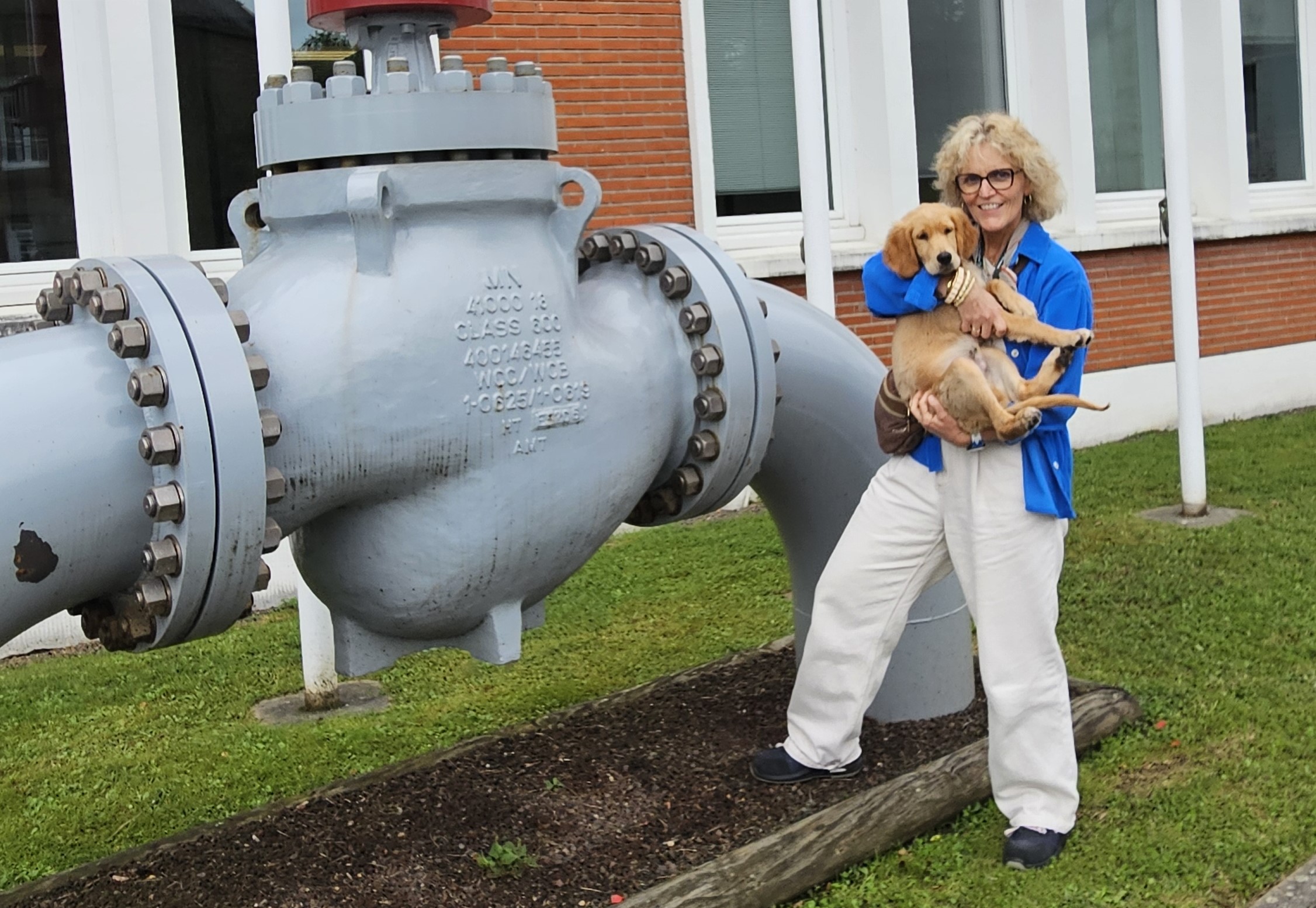
When Stefania Tramontana, Logistics and Production Manager at Baker Hughes’ Condé-sur-Noireau control valve production plant, responded to a call-out from the Caen-Normandy Guide Dog School for a family willing to bring up a guide dog for the first year of its life, she was keen but not too hopeful. She imagined that she might have to be retired to take on the task. If not, she thought Baker Hughes might be hesitant to allow an energetic puppy in a facility that prides itself on precision in delivering the technology that helps keep the nuclear industry safe.
Happily, she learned that working from home was not an option for Vasco the Golden Retriever, Guide Dog in Training. On the contrary, he needs to be right where the action is, learning to deal with disruption, noise and precautions such as are called for in an industrial environment. Learning to conduct himself according to the protocols of meetings and office life was considered a bonus. After all, his ultimate, visually impaired owner may require guidance in all kinds of situations, and a furry companion needs to be able to keep a cool head while making judgment calls.
As for Baker Hughes, the response of Stefania’s direct manager to the idea of a four-legged employee was “Oui!”. Human Resources, and Health, Safety and Environment departments approved the proposal. And when she put it to Baker Hughes’ headquarters, they said, “Yeah, that’s wonderful. We love it. Go ahead,” says Stefania.
Vasco was two months old, a cuddly, silky-eared bundle of curiosity when he joined the firm and the Hergault-Tramontana family in August 2024. Always up for a photo opportunity with new friends and situations, he also needed power naps between adventures and was often seen snoozing beside a lectern or in meetings. Stefania became adept at moderating and matching his energy levels to her own KPIs (Key Performance Indicators). Return on investment in his upbringing and socialization has been high and manifested in unexpected ways.
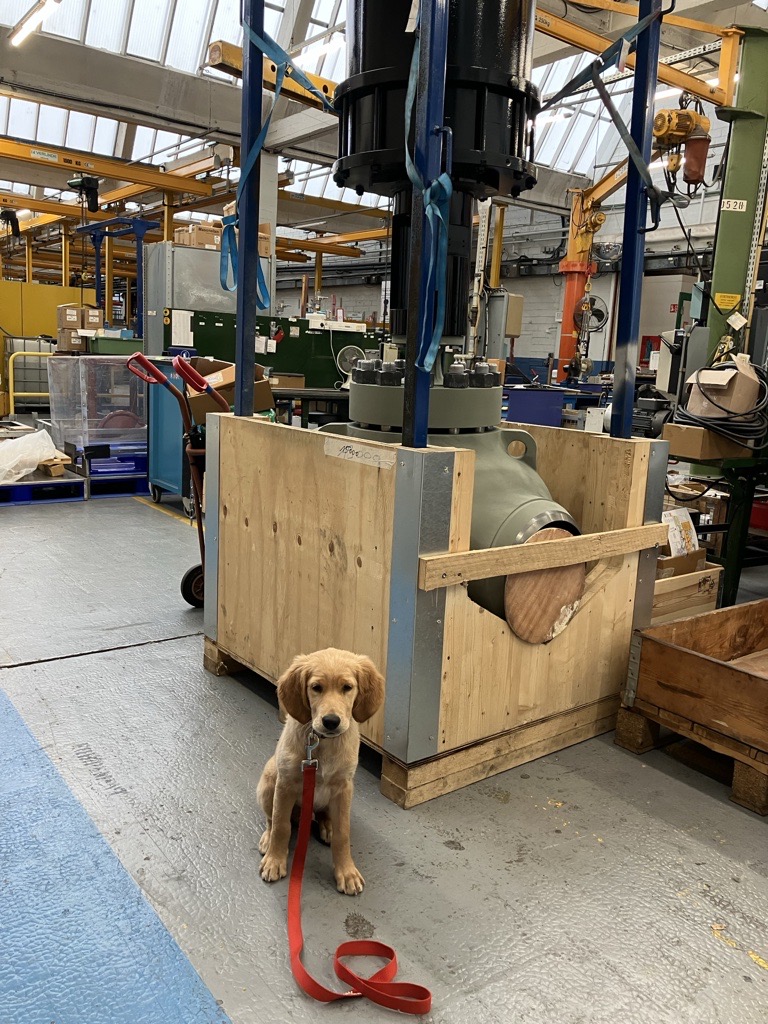
Was it a spur of the moment decision to take on a guide dog in training?
Stefania TRAMONTANA:
No, I have wanted to do this for 25 years, but I thought I was supposed to be retired to do it. Then last year, I met with the A Vue de Truffe' Association, which works in partnership with Caen-Normandy Guide Dog School. They were looking for a family ready to take a puppy and train him for a year. They needed someone who was able to take the dog to their place of work.
Who was at home to welcome Vasco when he arrived?
Stefania:
My husband, Christophe and I, one of our two sons, Paolo who’s 18 years old, our cat and our own much-loved dog, Ioda, also a Golden Retriever. We thought that Vasco could grow up with our old dog, but sadly that didn’t happen because we discovered she had an illness, and Ioda died a couple of weeks after Vasco came to us.
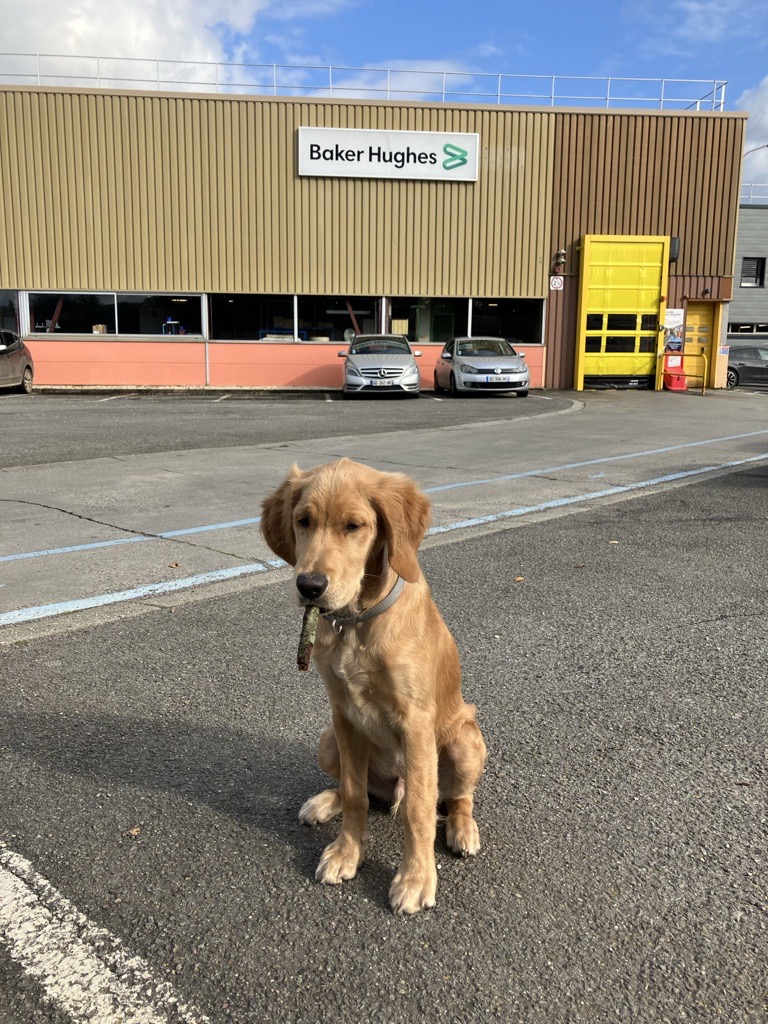
What’s the main reason for Vasco to be spending this time with you?
Stefania:
He needs to become socialized and get used to being among people in all kinds of situations. I need to take him everywhere with me: when I go to the supermarket, if I go to a restaurant or to the cinema. When I went on a holiday to Italy, he came with me on the plane.
At Baker Hughes, your work is quite varied, managing the shop floor and being involved in management decisions and meetings. Is it difficult to do your job while also thinking about Vasco?
Stefania:
At the beginning, I was a little bit worried about that, but in fact, it's easy to manage. I'm lucky, because I share an office with my boss who also loves dogs. I think Vasco is good for us both. You know, sometimes we have some stressful situations to deal with at work, and just having Vasco lying there beside us is very calming.
I also take Vasco with me into the workshop twice a day when I go to say good morning or good afternoon to the staff. It is noisy and can be dangerous, because it's an industrial site. You have forklifts moving around. There are many heavy things, like big valves to transport through the plant. Outside we have trucks. You always need to pay attention and stop when there’s possible danger. In the plant, Vasco must follow me and not do whatever he wants.
After two weeks of going around the plant with me, he was so happy to see the people at their workstations. He learned very quickly to stop at the entrance of each workstation in the machine shop, which can be dangerous for him. He waits at exactly the right place for people to come to give him a pat, and then we move to the next machine. He's now very comfortable in this place.
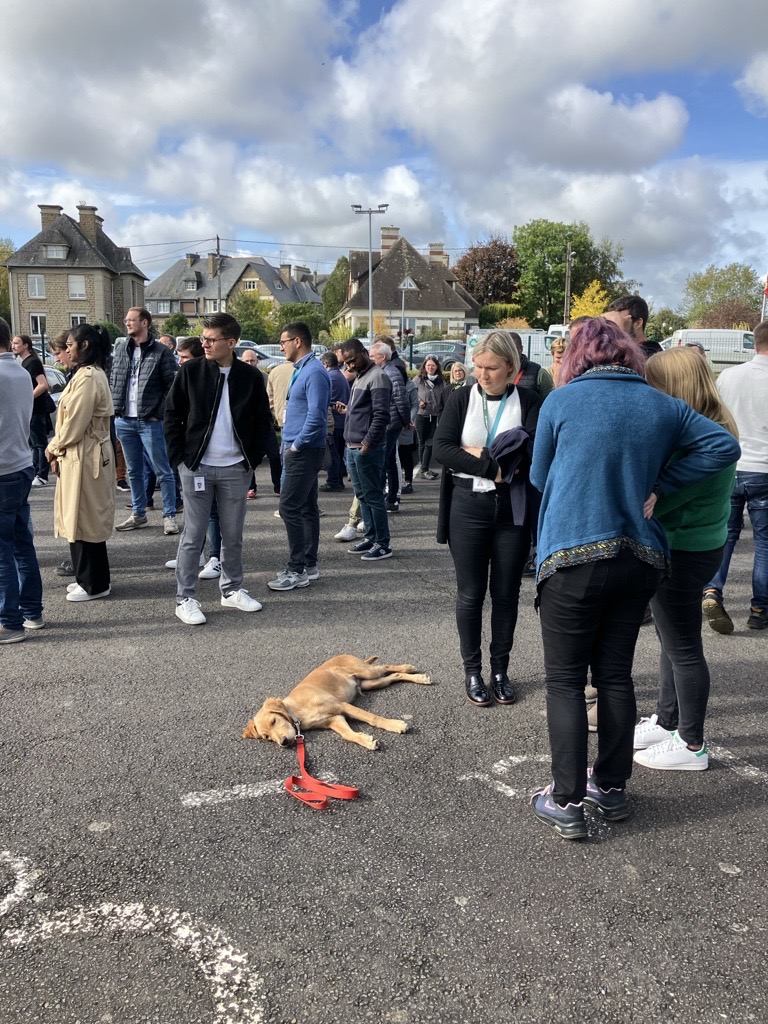
What else has he learned spending time at a Baker Hughes facility?
Stefania:
He has learned to be sociable, not to be afraid of a lot of people, or of a lot of noise.
Vasco has also learned to be good when we are in a meeting. He's young, so he very often wants to play. When he was two months old, that was OK, but at eight months, when a dog starts playing, it can turn into a big mess. Now he's able to be patient and wait.
He knows now that when the meeting is over, I will go outside with him. Our Condé site has a lot of green space around the plant, and I often spend several minutes there, throwing a stick for him.
I don’t take him to every meeting. If it’s a serious meeting and Vasco is not in a serious mood, I don’t want to create a bad situation for me, for Vasco, or for employees at the plant.
Something I learned is that Vasco feels it when I am stressed about a particular situation at work. When he was young, I was apprehensive about a particular meeting and carefully prepared what I would say. During the meeting, my colleagues insisted on playing with Vasco when I asked them not to. Vasco felt the tension and went to the toilet in my office. It only happened once, but it made me realize that our feelings have an impact on dogs. I had to reschedule the meeting because it was not productive.
But I have some colleagues who love and understand Vasco. Sometimes when I cannot take care of him, I ask them to come to my office and to take him outside, or to keep him company for a little while.
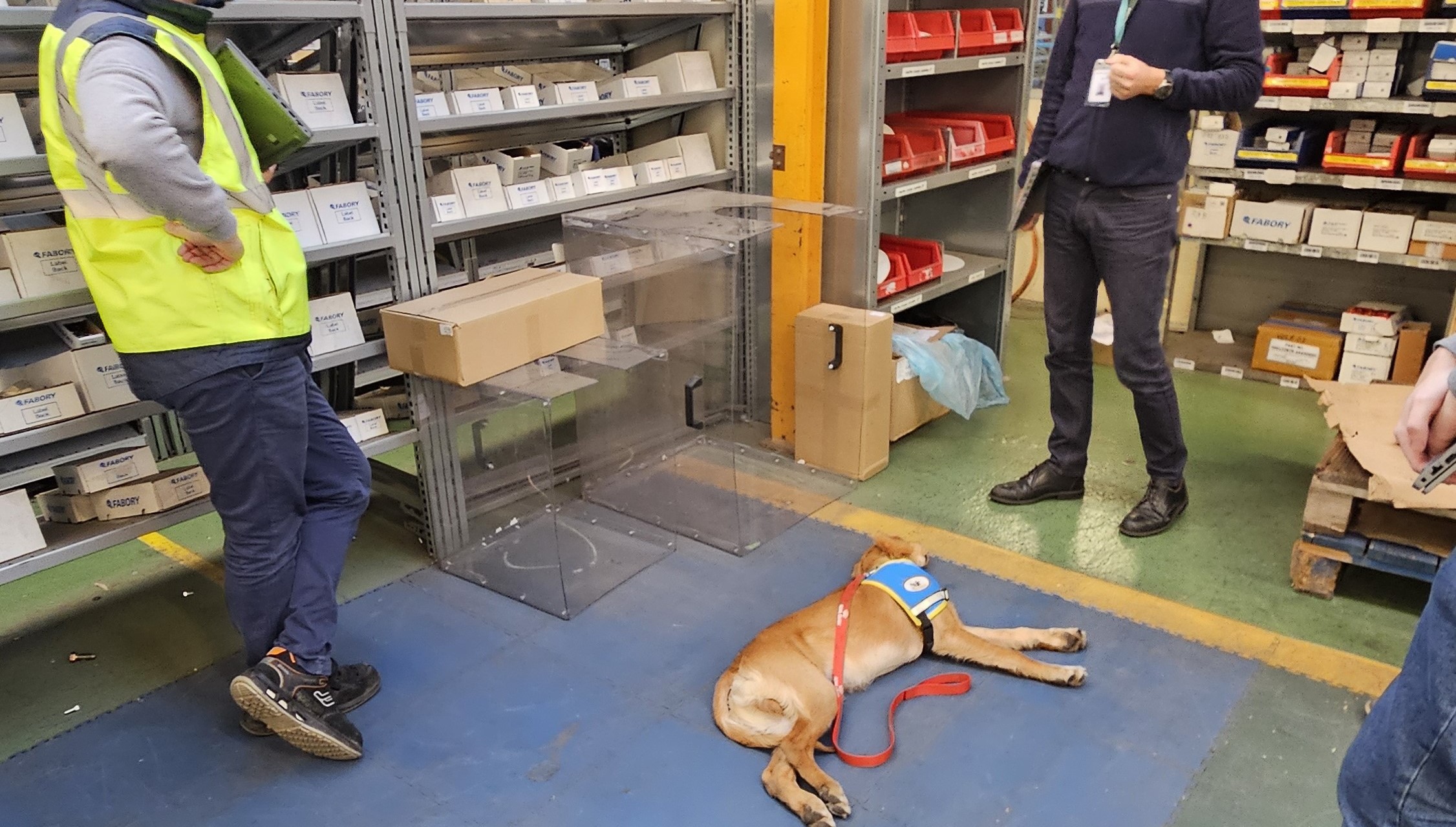
It sounds as if the reaction from people in general has been positive. Are there benefits to having Vasco at work?
Stefania:
Sometimes, I need to communicate difficult things to teams on the shop floor. It’s interesting how bringing Vasco with me helps to improve how those communications are received and understood, because people love and respond to him. I find that very, very impressive.
In October last year, one of the employees in the workshop was retiring. I left Vasco at my desk to go to the farewell party thinking it would be a bit chaotic with him around. The employee who was retiring was so disappointed. He asked me, “But where is Vasco? I want him to come to my party.” So, I went and got Vasco. He was a very good boy. Everybody took care of him, and it was quite special to have him at the event.

How does Vasco like to spend his free time?
Stefania:
He’s still a puppy so he likes to play with balls for example. Because he’s a Golden Retriever, he also loves swimming, so we take him places where he can swim. On the weekend, he also loves going to the city with us.
One great thing about being the host family for a future assistance dog is that wherever you go, people come to speak to you. He has a blue jacket with the sign ‘This is a future assistance dog’, and people always want to know, “How does it work? What will he be doing when he is fully trained?” We’ve met a lot of people thanks to Vasco. We hadn’t expected that, and he has opened our minds.
Another question people always ask is, “Won't it be very difficult when you have to let him go?” And of course it will, because I love him, but I have always known he will leave me after one year. I tell people: “When you want to help people, sometimes you give money to a charity. I don't give money, but I give concrete action. I give one year of my life, lots of love and time, to help a dog become a good guide dog who will change someone’s life in many positive ways.”

How does Vasco’s journey continue after his socialization with your family and at Baker Hughes?
Stefania:
He will go to a training school for one year, where he will learn what he has to do as a companion for a disabled person. When he is fully trained, he will most likely be placed with someone who has a visual impairment. He will be their assistant and companion for eight years, and then he will be retired.
Do you think you will take on another assistance dog?
Stefania:
Yes, I think so, but I will take a break first. Although it gives you a lot, it takes quite a bit of energy to look after him. For example, I do a lot of sport, and sometimes at lunchtime I just like to rest for maybe half an hour at my desk. When I’m caring for Vasco, that’s not possible. He needs me to take him outside, and he is my priority. Before I do something for me, I first do something for him. But I will get another puppy at some point, for sure.
I am very thankful to Baker Hughes for allowing me to do this. And I’m always happy to answer questions from people who are thinking of bringing up a future assistance dog. It's very difficult for the training organisations to find families who want to give a year of their time, so I hope I can help other people feel comfortable to take that rewarding step.
Energy Forward Stories
Sign up to stay up to date on the latest innovations and people shaping the future of our industry.


